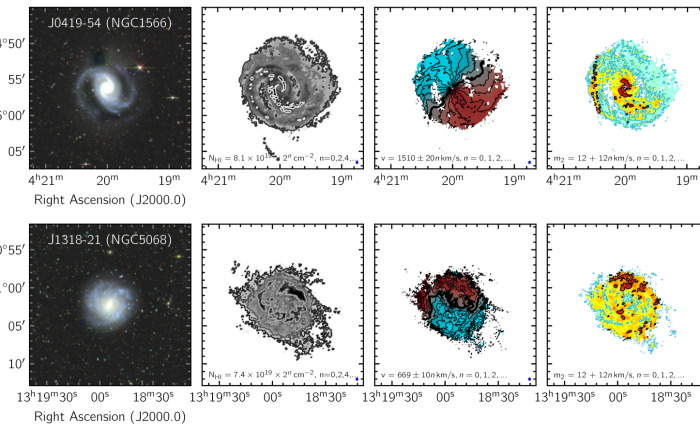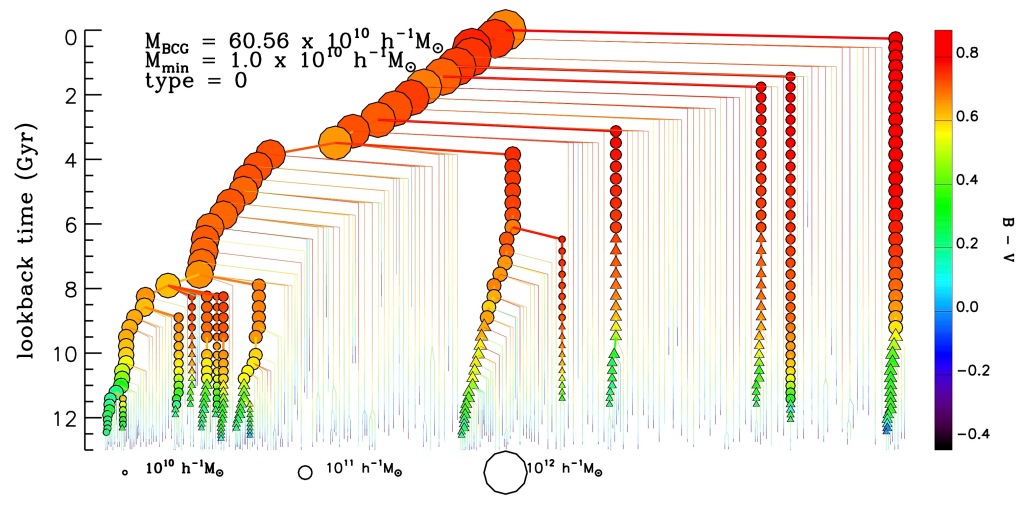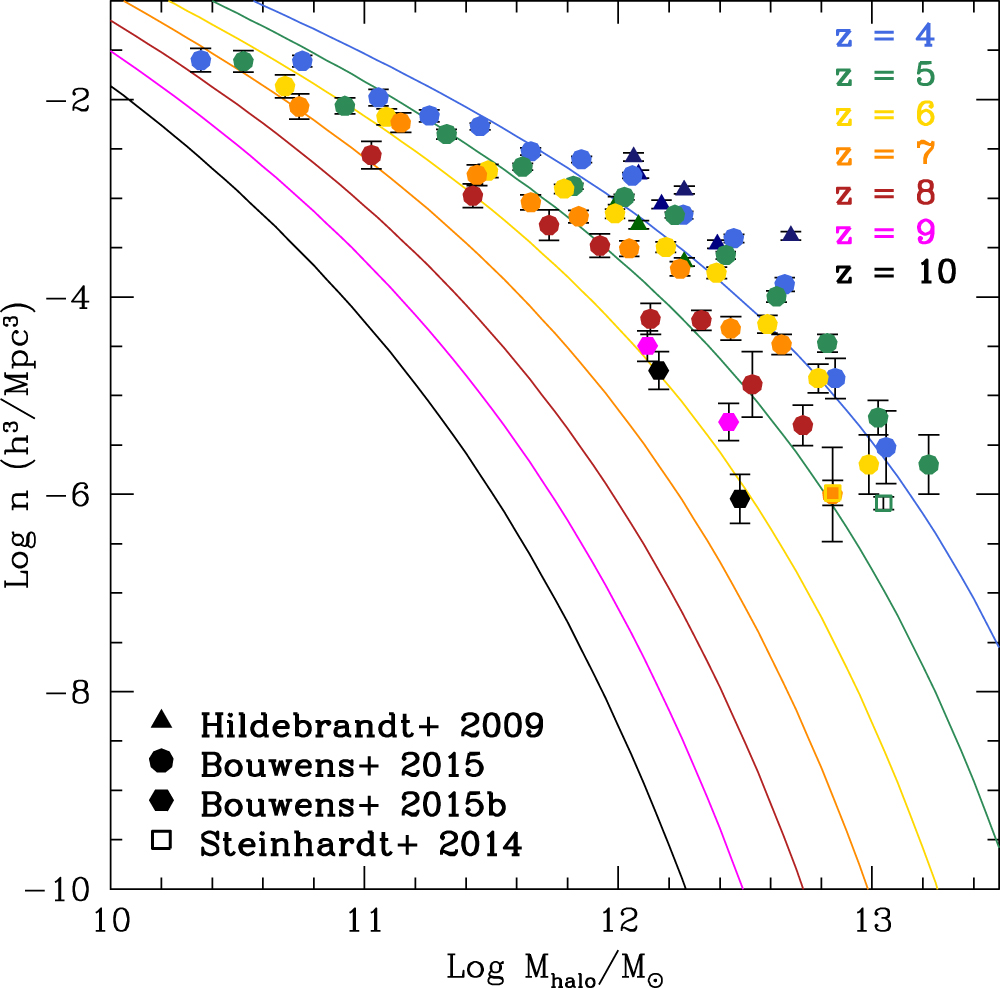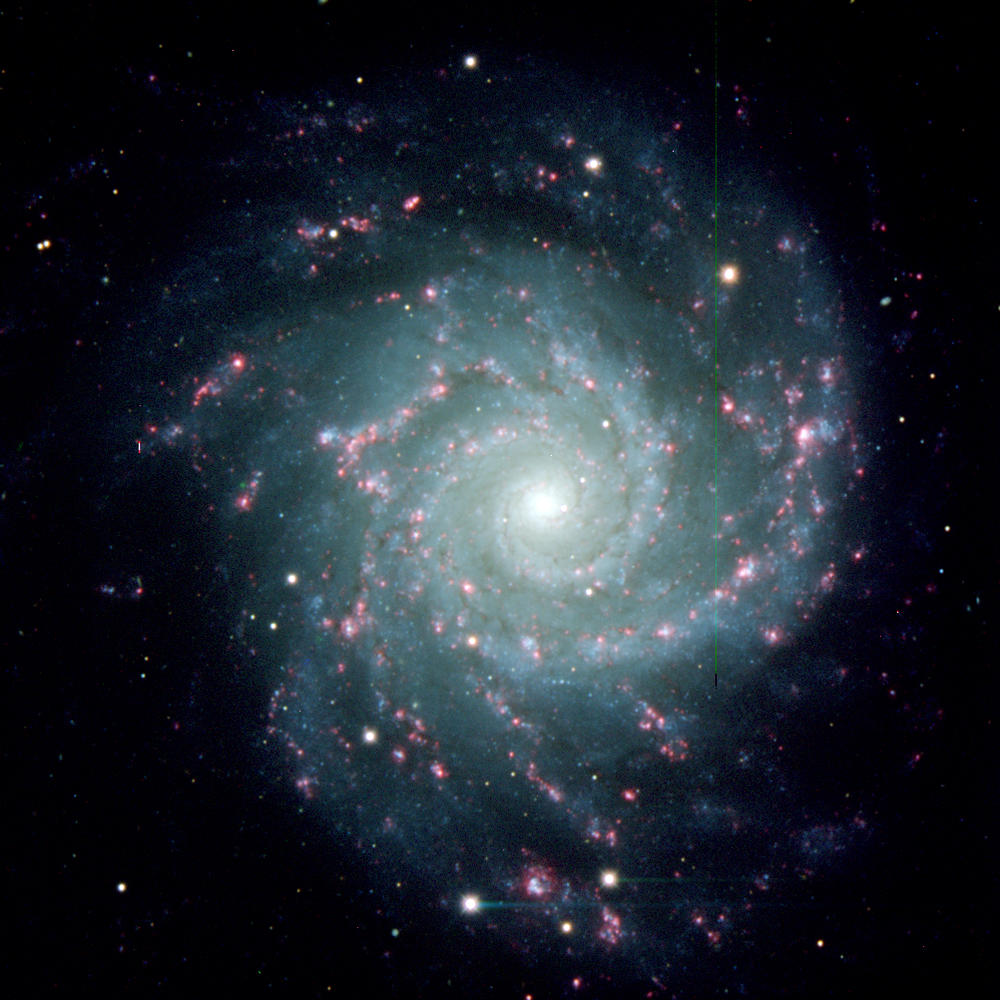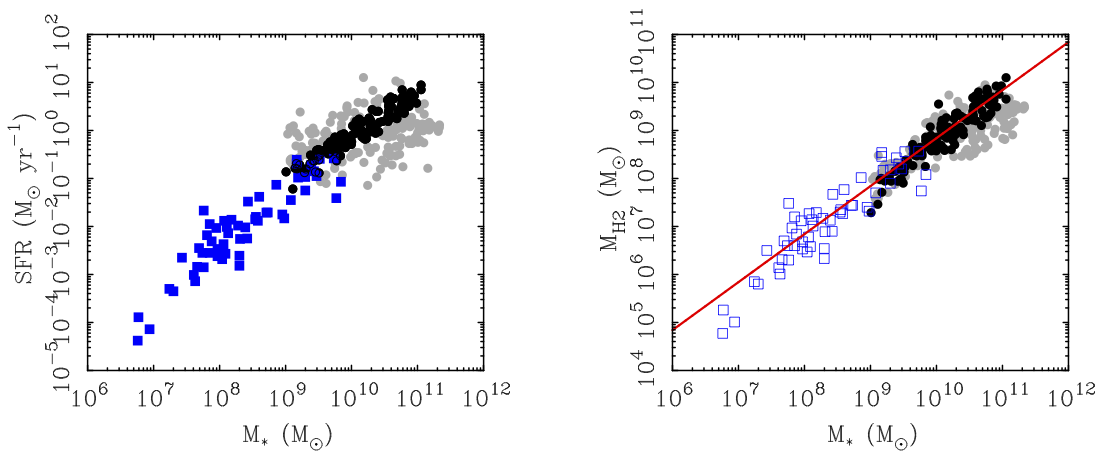I have been spending a lot of time lately writing up a formal paper on high redshift galaxies, so haven’t had much time to write here. The paper is a lot more involved than I told you so, but yeah, I did. Repeatedly. I do have a start on a post on self-interacting dark matter that I hope eventually to get back to. Today, I want to give a quick note about the MHONGOOSE survey. But first, a non-commercial interruption.
Triton Station joins Rogue Scholar
In internet news, Triton Station has joined Rogue Scholar. The blog itself hasn’t moved; Rogue Scholar is a community of science blogs. It provides some important capabilities, including full-text search, long-term archiving, DOIs, and metadata. The DOIs (Digital Object Identifiers) were of particular interest to me, as they have become the standard for identifying unique articles in regular academic journals now that these have mostly (entirely?) gone on-line. I had not envisioned ever citing this blog in a refereed journal, but a DOI makes it possible to do so. Any scientists who find a post useful are welcome to make use of this feature. I’m inclined to follow the example of JCAP and make the format volume, page be yearmonth, date (YYMM, DD), which comes out to Triton Station (2022), 2201, 03 in the standard astronomy journal format. I do not anticipate continuing to publish in the twenty second century, so no need for YYYYMM, Y2K experience notwithstanding.
For everyone interested in science, Rogue Scholar is a great place to find new blogs.
MHONGOOSE
In science news, the MHONGOOSE collaboration has released its big survey summary paper. Many survey science papers are in the pipeline. Congratulations to all involved, especially PI Erwin de Blok.
Erwin was an early collaborator of mine who played a pivotal role in measuring the atomic gas properties of low surface brightness galaxies, establishing the cusp-core problem, and that low surface brightness galaxies are dark matter dominated (or at least evince large mass discrepancies, as predicted by MOND). He has done a lot more since then, among them playing a leading role in the large VLA survey of nearby galaxies, THINGS. In astronomy we’re always looking forward to the next big survey – its a big universe; there’s always more out there. So after THINGS he conceived and began work on MHONGOOSE. It has been a long road tied to the construction of the MeerKAT array of radio telescopes – a major endeavor on the road to the ambitious Square Kilometer Array.
I was involved in the early phases of the MHONGOOSE project, helping to select the sample of target galaxies (it is really important to cover the full dynamic range of galaxy properties, dwarf to giant) and define the aspirational target sensitivity. HI observations often taper off below a column density of 1020 hydrogen atoms per cm2 (about 1 solar mass per square parsec). With work, one can get down to a few times 1019 cm-2. We want to go much deeper to see how much farther out the atomic gas extends. It was already known to go further out than the stars, but how far? Is there a hard edge, or just a continuous fall off?
We also hope to detect new dwarf galaxies that are low surface brightness in HI. There could, in theory, be zillions of such things lurking in all the dark matter subhalos that are predicted to exist around big galaxies. Irrespective of theory, are there HI gas-rich galaxies that are entirely devoid of stars? Do such things exist? People have been looking for them a long time, and there are now many examples of galaxies that are well over 95% gas, but there always seem to be at least a few stars associated with them. Is this always true? If we have cases that are 98, 99% gas, why not 100%? Do galaxies with gas always manage to turn at least a little of it into stars? They do have a Hubble time to work on it, so it is also a question why there is so much gas still around in these cases.
And… a lot of other things, but I don’t want to be here all day. So just a few quick highlights from the main survey paper. First, the obligatory sensitivity diagram. This shows how deep the survey reaches (lower column density) as a function of resolution (beam size). You want to see deeply and you want to resolve what you see, so ideally both of these numbers would be small. MHONGOOSE undercuts existing surveys, and is unlikely to be bettered until the full SKA comes on-line, which is still a long way off.

And here are a couple of individual galaxy observations:
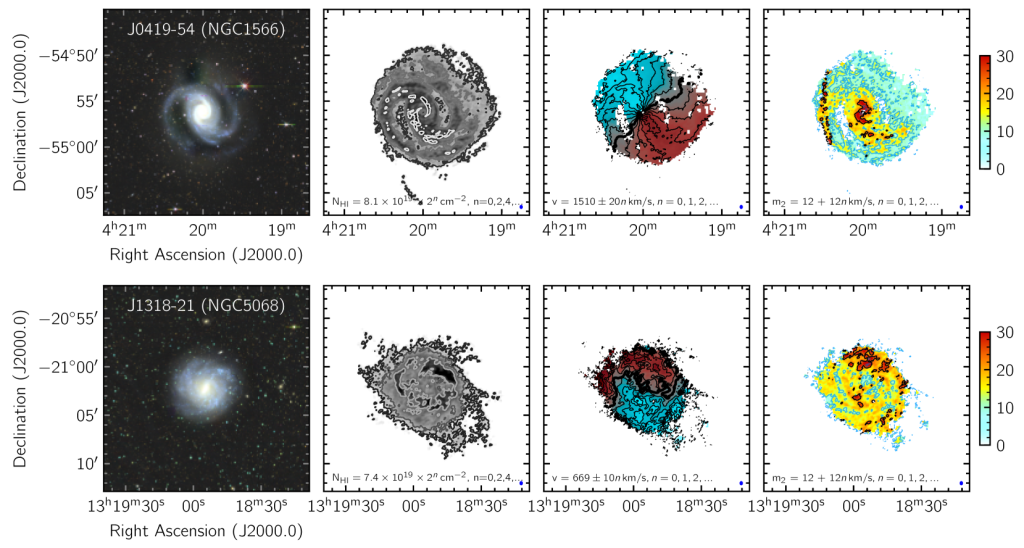
These are beautiful data. The spiral arms appear in the HI as well as in starlight, and continue in HI to larger radii. The outer edge of the HI disk is pretty hard; there doesn’t seem to be a lot of extra gas at low column densities extending indefinitely into the great beyond. I’m particular struck by the velocity dispersion of NGC 1566 tracking the spiral structure: this means the spiral arms have mass, and any stirring caused by star formation is localized to the spirals where much of the star formation goes on. That’s natural, but the surroundings seem relatively unperturbed: feedback is happening locally, but not globally. The velocity field of NGC 5068 has a big twist in the zero velocity contour (the thick line dividing the red receding side from the blue approaching side); this is a signature of non-circular motion, probably caused in this case by the visible bar. These are two-dimensional examples of Renzo’s rule (Sancisi’s Law), in which features in the visible mass distribution correspond to features in the kinematics.
I’ll end with a quick peak at the environments around some MHONGOOSE target galaxies:
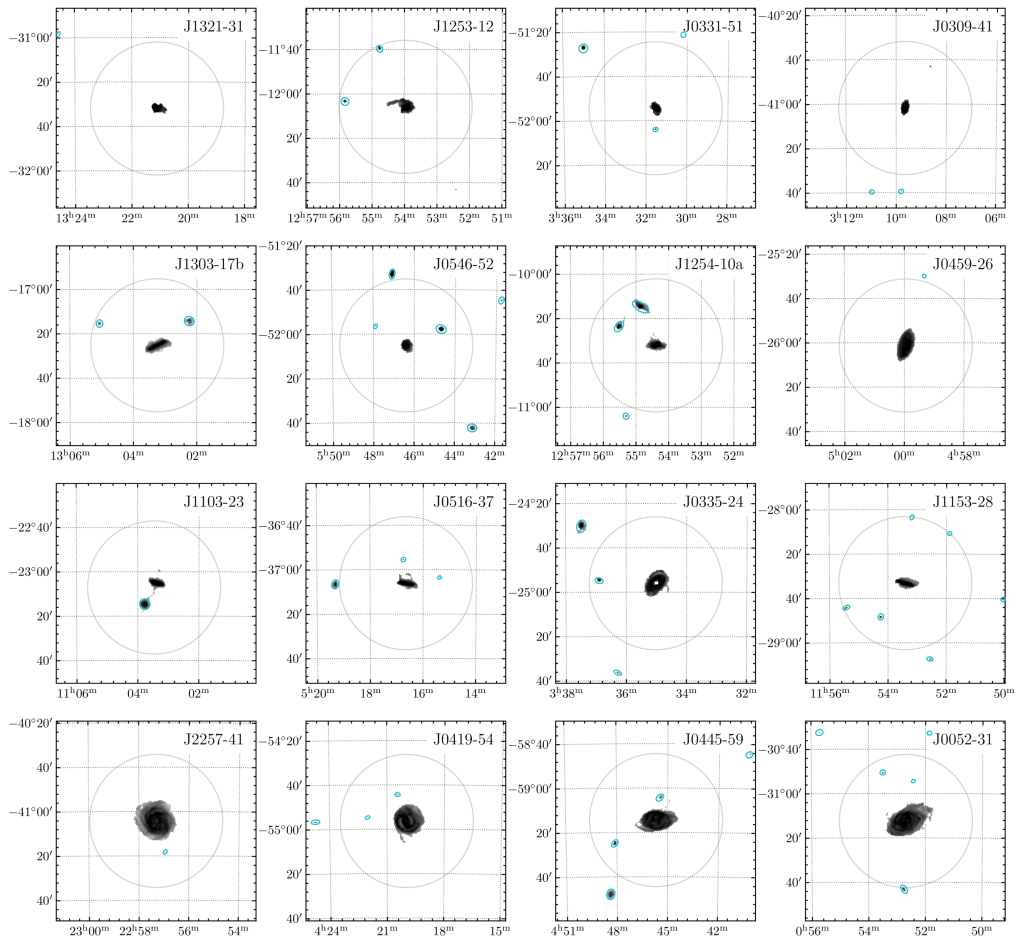
This is nifty on many levels. First, some (presumptively satellite) dwarf galaxies are detected. That in itself is a treat to me: once upon a time, Renzo Sancisi asked me to smooth the bejeepers out of the LSB galaxy data cubes to look for satellites. After much work, we found nada. Nothing. Zilch. It turns out that LSB galaxies are among the most isolated galaxy types in the universe. So that we detect some things here is gratifying, even in targets that are not LSBs.
Second, there are not a lot of new detections. The halos of big galaxies are not swimming in heretofore unseen swarms of low column density gas clouds. There can always be more at sensitivities yet unreached, but the data sure don’t encourage that perspective. MHONGOOSE is sensitive to very low mass gas clouds. The exact limit is distance-dependent, but a million solar masses of atomic gas should be readily visible. That’s a tiny amount by extragalactic standards, about one globular cluster’s worth of material. There’s just not a lot there.
Disappointing as the absence of zillions of new detections may be discovery-wise, it does teach us some important lessons. Empirically, galaxies look like island universes in gas as well as stars. There may be a few outlying galaxies, but they are not embedded in an obvious cosmic network of ephemeral cold gas. Nor are there thousands of unseen satellites/subhalos suddenly becoming visible – at least not in atomic gas. Theorists can of course imagine other things, but we observers can only measure one thing at a time, as instrumentation and telescope availability allows. This is a big step forward.
